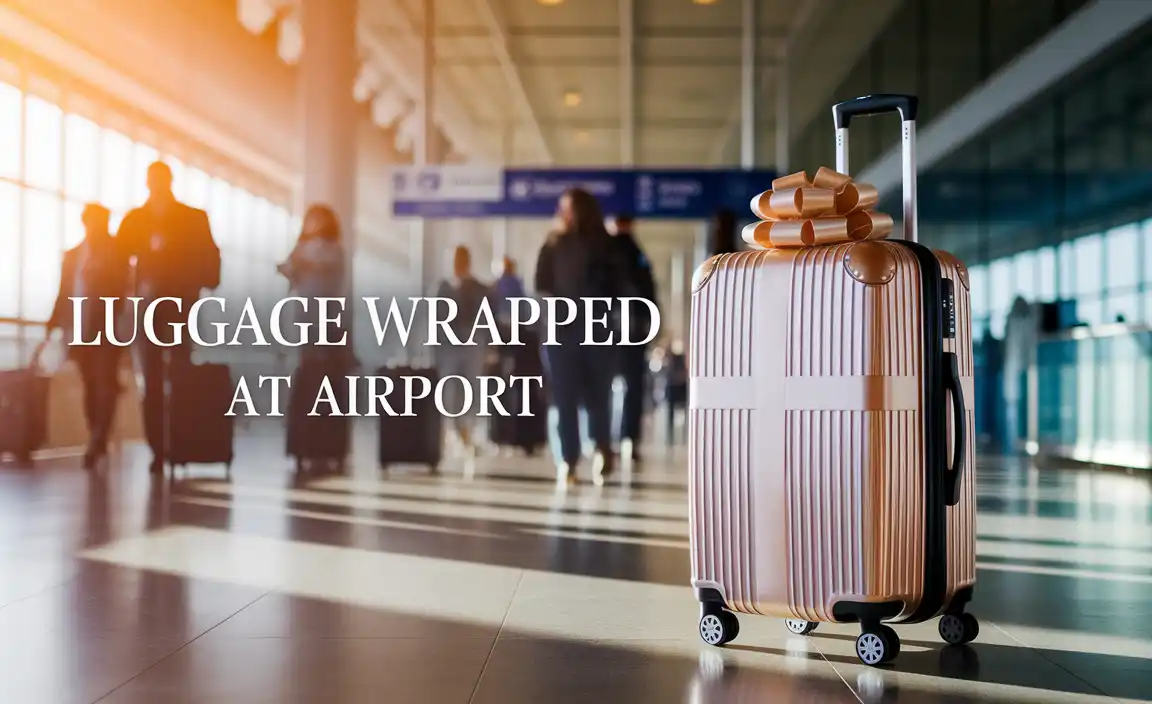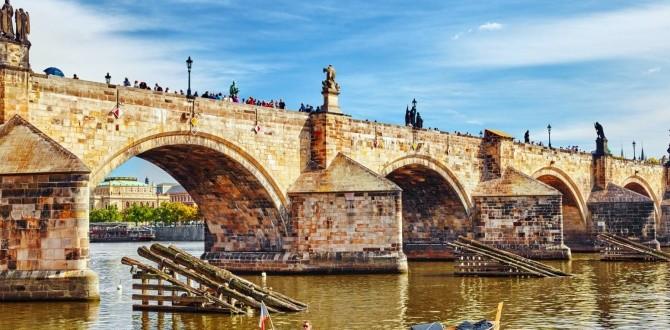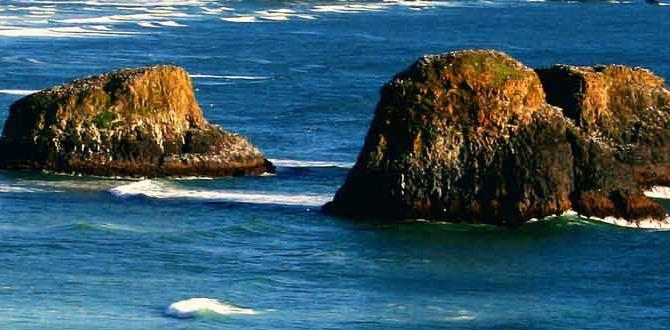Embarking on your first trip to Banff National Park? This guide offers essential tips for a memorable, stress-free adventure. We cover packing, planning, and essential sights, ensuring a comfortable and exciting experience for everyone, including tips for those needing travel-friendly comfort solutions.
Banff First-Timers Guide: Essential Tips for an Unforgettable Adventure
Dreaming of turquoise lakes, majestic mountains, and wildlife sightings? Banff National Park is a Canadian gem that calls to adventurers. But planning a trip to such a vast and popular destination can feel a little daunting, especially for your very first visit. You might wonder what to pack, when to go, and how to make the most of your time without feeling overwhelmed. Don’t worry! This guide is here to simplify things. We’ll walk you through everything you need to know to ensure your first trip to Banff is comfortable, exciting, and every bit as magical as you imagine, with practical advice that caters to all travelers.
Planning Your Banff Adventure: The Golden Rules
A little preparation goes a long way when it comes to Banff. Understanding the basics can save you time, money, and stress. Let’s break down the essentials to get you started on the right foot.
When to Visit Banff: Seasons and Their Charms
Banff is beautiful year-round, but each season offers a unique experience. Knowing what to expect will help you pack and plan accordingly.
- Summer (June to August): This is the most popular time, with warm weather perfect for hiking, boating, and exploring. Expect crowds and higher prices. Sunflowers and wildflowers are in bloom.
- Fall (September to October): Fall offers crisp air, fewer crowds, and stunning golden larch trees. It’s ideal for hiking and photography. Weather can be unpredictable, with a chance of early snow.
- Winter (November to March): Banff transforms into a winter wonderland. It’s perfect for skiing, snowboarding, ice skating, and enjoying cozy lodge life. Days are short, and it’s very cold.
- Spring (April to May): Spring is a transition season. Some winter activities might still be available early on, while summer attractions begin to open later. Trails can be muddy or snowy, and wildlife is becoming more active.
Booking Accommodation and Activities
Banff is a top-tier destination, so booking in advance is crucial, especially during peak season.
- Accommodation: Whether you prefer a luxury hotel, a cozy cabin, or a budget-friendly hostel, book your lodging months ahead. Consider staying in the town of Banff for easy access to amenities or in nearby Canmore for a slightly quieter, often more affordable option.
- Tours and Rentals: Popular tours, like the Banff Gondola or Lake Louise boat tours, and car rentals can sell out quickly. Check Parks Canada for any required permits or timed entry reservations for popular spots. For example, access to Moraine Lake requires booking shuttle services or using cycling/walking access.
Getting to Banff and Getting Around
Your journey to Banff can be part of the adventure!
- By Air: The closest major airport is Calgary International Airport (YYC). From Calgary, you can rent a car or book a shuttle service to Banff, a scenic 1.5 to 2-hour drive.
- By Car: Driving provides the most flexibility. Ensure your vehicle is in good condition, especially if traveling in winter. Always have an up-to-date map or GPS.
- Within Banff: The town of Banff is walkable. For exploring the park, having a car is best. However, parking can be challenging at popular spots. Parks Canada offers excellent public transit options, including Roam Public Transit bus services that connect the town of Banff with major attractions like Lake Louise and Moraine Lake. This is an eco-friendly and stress-free way to travel, especially during busy periods.
Understanding Park Passes
To enter Banff National Park, you need a Parks Canada Discovery Pass. This pass grants you access to all Canadian national parks for a year. You can purchase it online in advance or at park gates. A daily pass option is also available. Failure to have a valid pass can result in fines, so make sure to secure yours before your visit. For more details, you can visit the official Parks Canada Banff Safety page which also covers park pass information.
Packing Essentials for Your Banff Trip
Comfort and preparedness are key to enjoying Banff’s natural beauty. The weather can change rapidly, so layering is your best friend. Even in summer, mornings and evenings can be cool, and mountain weather is notoriously unpredictable.
Clothing: The Layering Approach
Think in terms of layers to adapt to varying temperatures and conditions.
- Base Layers: Moisture-wicking tops and bottoms (synthetic or merino wool are great) to keep you dry.
- Mid Layers: Fleece jacket or a down vest for insulation.
- Outer Layer: A waterproof and windproof jacket is essential. Consider insulated options if visiting in cooler months.
- Pants: Comfortable hiking pants or durable, quick-drying trousers. Waterproof pants are beneficial for wet conditions.
- Footwear: Waterproof hiking boots with good ankle support are a must for exploring trails. Comfortable shoes for around town are also handy. Bring extra socks!
- Accessories: A warm hat, gloves, and a scarf are necessary even in summer for cooler days or higher elevations.
Special Considerations for Comfort and Convenience
Beyond standard clothing, think about what will make your travels smoother and more comfortable, especially for longer days or specific needs.
- Reusable Water Bottle: Staying hydrated is important, and you can refill your bottle at various locations.
- Sun Protection: Sunscreen, sunglasses, and a hat are vital, even on cloudy days, due to higher UV radiation at altitude.
- Insect Repellent: Especially useful during summer months to ward off mosquitoes and black flies.
- Backpack: A comfortable daypack is essential for carrying water, snacks, extra layers, and your camera.
- Travel Comfort Items: If you anticipate needing extra support or convenience during long outings, consider bringing along travel-friendly comfort items. For instance, adult or child diapers can offer peace of mind for extended periods away from facilities, ensuring you can focus on the incredible scenery without worry. Many discreet and highly absorbent options are available, making them a stress-free travel companion for those who need them, allowing for more freedom to explore.
Technology and Miscellaneous Items
- Camera: To capture those breathtaking landscapes!
- Portable Power Bank: To keep your devices charged on the go.
- First-Aid Kit: A basic kit for minor injuries.
- Binoculars: For spotting wildlife from a safe distance.
- Bear Spray: If you plan on extensive hiking in more remote areas. Know how to use it, and always carry it. Check Parks Canada guidelines for safe wildlife viewing.
Must-See Attractions for First-Timers
Banff is packed with iconic sights. Prioritize these to get a true taste of the park’s grandeur.
The Majestic Lakes
These are the postcard-perfect spots that draw millions.
- Lake Louise: Famous for its vivid turquoise water mirroring the Victoria Glacier. Rent a canoe for an unforgettable experience (book in advance!).
- Moraine Lake: Another stunningly blue lake, set amidst the Valley of the Ten Peaks. Access is restricted to shuttles, public transit, or cycling/walking.
- Peyto Lake: Known for its unique wolf-like shape and vibrant blue color when viewed from Bow Summit.
- Emerald Lake (Yoho National Park): While technically in Yoho, it’s a short drive from Banff and well worth the visit for its vivid green hue.
Spectacular Views and Gondolas
Get a bird’s-eye view of the Rockies.
- Banff Gondola: Ascend Sulphur Mountain for panoramic views of Banff townsite, the Bow Valley, and surrounding peaks. The boardwalk at the summit is a must-walk.
- Lake Louise Sightseeing Gondola: Offers incredible views of Lake Louise from above and is a great spot for grizzly bear sightings.
- Bow Lake and Num-Ti-Jah Lodge: A beautiful, easily accessible lake with stunning mountain reflections.
Scenic Drives and Easy Hikes
Soak in the scenery without strenuous effort.
- Bow Valley Parkway: A slower, scenic alternative to the Trans-Canada Highway, offering opportunities for wildlife viewing and access to Johnston Canyon.
- Icefields Parkway (Highway 93 North): Considered one of the most scenic drives in the world, connecting Banff and Jasper National Parks. Stop at viewpoints like Athabasca Glacier.
- Johnston Canyon: A popular walk along catwalks through a narrow canyon to Lower and Upper Falls. It’s accessible and offers incredible geological formations.
- Tunnel Mountain Trail: A relatively short hike (around 4.8 km roundtrip) directly from the town of Banff, providing excellent views of the town and Bow Valley.
Table: Best Time to Visit Banff for Different Activities
Choosing the right time of year can significantly enhance your Banff experience.
| Season | Weather Highlights | Ideal For | Drawbacks |
| :———– | :———————————————– | :————————————————————————– | :————————————————————- |
| Summer | Warm, sunny days (avg. 15-25°C), long daylight | Hiking, canoeing, cycling, sightseeing, wildlife viewing (active) | Crowds, higher prices, requires booking far in advance |
| Fall | Crisp, cool air (avg. 5-15°C), beautiful foliage | Hiking, photography, fewer crowds, stunning larch colors (mid-late Sept) | Unpredictable weather, chance of early snow, shorter daylight |
| Winter | Cold, snowy, frozen lakes (avg. -15 to -5°C) | Skiing, snowboarding, ice skating, snowshoeing, winter festivals | Very cold, short daylight hours, limited access to some areas |
| Spring | Mild to cool, variable (avg. 5-15°C), melting snow | Early spring skiing, shoulder season hiking, wildlife emergence (later spring) | Muddy trails, unpredictable weather, some attractions still closed |
Tips for Wildlife Safety and Viewing
Banff is home to diverse wildlife, including elk, deer, bighorn sheep, bears, and more. Enjoying them safely is paramount.
- Keep Your Distance: Never approach, feed, or try to pet wild animals. Stay at least 30 meters (100 feet) away from elk and deer, and 100 meters (330 feet) from bears and wolves.
- Use Binoculars or a Zoom Lens: This allows you to observe wildlife up close without disturbing them or putting yourself at risk.
- Be Bear Aware: Hike in groups, make noise, and carry bear spray. Know the signs of bear activity. Learn more from Banff Lake Louise’s Wildlife Safety page.
- Never Feed Wildlife: Feeding animals can make them aggressive and dependent on humans, which is detrimental to their health and safety and yours.
- Pullover Safely: If you spot wildlife from your car, pull over completely to the right shoulder and use hazard lights. Do not stop in the middle of the road, as this can cause traffic jams and is dangerous.
Sustainable Travel in Banff
As visitors, we have a responsibility to protect this incredible natural environment for future generations.
- Stay on Trails: This protects fragile vegetation and prevents erosion.
- Pack it In, Pack it Out: Take all your garbage with you, including organic waste like apple cores.
- Respect Wildlife: As mentioned, keeping a safe distance and never feeding animals is crucial.
- Reduce Your Footprint: Utilize public transportation, carpool when possible, and conserve water and energy at your accommodation.
- Choose Eco-Friendly Options: Support local businesses that practice sustainability.
Conclusion
Your first visit to Banff National Park is an adventure waiting to unfold. By planning ahead, packing smart, and respecting the natural environment, you’re setting yourself up for an incredible experience. From the iconic turquoise lakes to the majestic mountain vistas, Banff offers something truly special for every traveler.
Whether you’re hiking a challenging trail, enjoying a scenic drive, or simply soaking in the views, remember to embrace the moment and the unparalleled beauty surrounding you. With these essential tips, you’re well-equipped to create lasting memories in one of Canada’s most breathtaking national parks. Safe travels and enjoy the journey with confidence and comfort!
Frequently Asked Questions
Q1: Do I need a car to get around Banff?
While a car offers the most flexibility, it’s not strictly necessary. The town of Banff is walkable, and Roam Public Transit offers excellent bus services to key attractions like Lake Louise and Johnston Canyon. For accessing remote trailheads or exploring extensively, a car can be beneficial, but consider shuttles or guided tours to reduce parking stress at popular spots.
Q2: What’s the best way to avoid crowds in Banff?
Visit during the shoulder seasons (spring or fall), explore popular spots early in the morning or late in the afternoon, and consider less-visited areas like Kananaskis Country or areas further north on the Icefields Parkway. Booking accommodations and activities well in advance also helps secure your desired times.
Q3: Is Banff expensive?
Banff can be a pricey destination, especially during peak summer months. Accommodation, popular tours, and even groceries can add up. However, you can manage costs by packing your own snacks, utilizing public transit or carpooling, looking for deals on lodging outside the townsite, and focusing on free activities like hiking and enjoying the scenery.
Q4: What should I do if I forget something important, like toiletries or specific comfort items?
The town of Banff has several shops, including a grocery store, outdoor gear shops, and pharmacies. You can find most essentials there. If you require specific personal care items, such as adult or child diapers, the larger pharmacies or health stores in town are the best places to check. It’s always wise to pack your primary needs, but don’t fret too much if you leave something minor behind.
Q5: How much time should I spend in Banff?
For a first-timer, at least 3-4 full days are recommended to see the main highlights like Lake Louise, Moraine Lake, and Banff townsite. To truly explore more deeply, including scenic drives like the Icefields Parkway and some moderate hikes, a week or more would be ideal.
Q6: Are there bears in Banff, and should I be worried?
Yes, Banff is home to grizzly and black bears. While encounters are not common for most visitors, it’s crucial to be bear aware. Follow safety guidelines: make noise while hiking, carry bear spray and know how to use it, and maintain a safe distance. Parks Canada provides excellent resources on bear safety. Most visitors have safe and enjoyable trips by taking necessary precautions.





